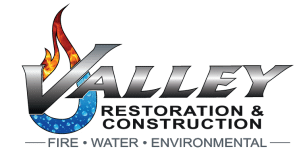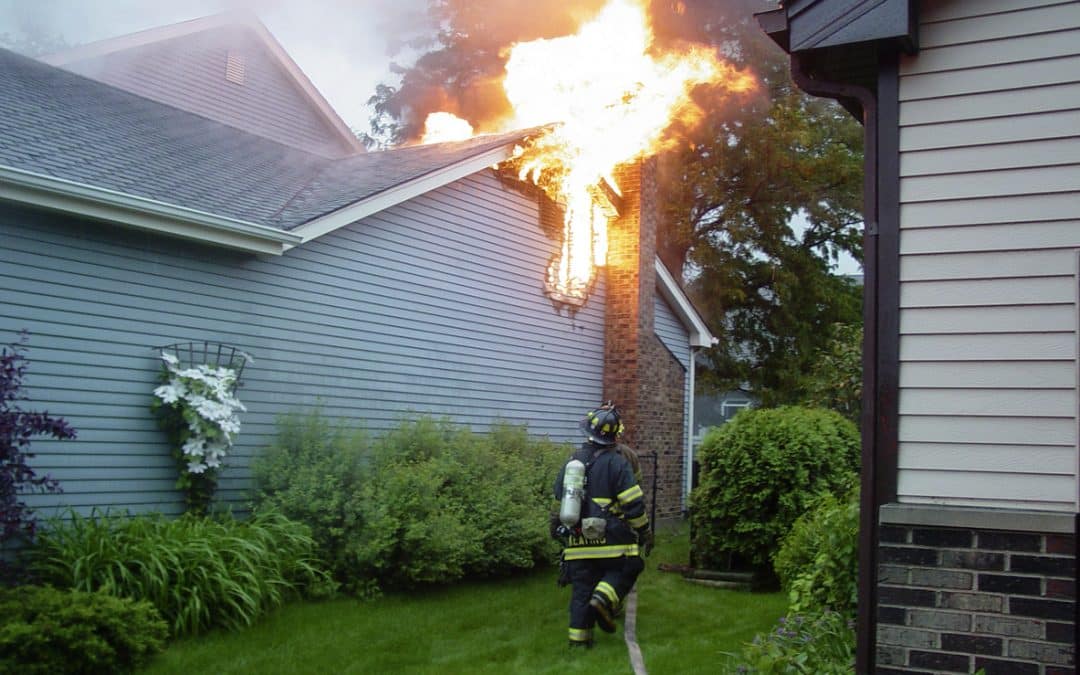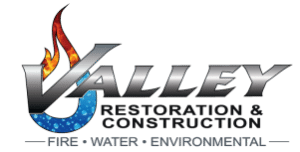An accidental fire can start with frightening randomness, spread out of control in seconds, and ultimately destroy a house. Even tiny fires that are quickly extinguished may cause thousands of dollars in damage and put the lives of everyone in the house at risk.
Unlike other types of property damage, most household fires start because of human error. Therefore, understanding the most typical causes of home fires can preserve lives and property. When you know what to look out for, you can make better-informed decisions within your house and, hopefully, avoid these common causes of household fires.
1. Cooking
House fires often ignite from cooking accidents. You may leave your kitchen unattended momentarily and return to flames and smoke. Grease fires are common, especially since grease becomes flammable and can catch fire without a flame. Once the grease is on fire, it’s tough to put out. Also, plastic utensils and oven mitts can quickly start kitchen fires if left too close to a burner and overheat.
Always use caution when working with your oven or stovetop. To minimize the risk of a housefire in your kitchen, follow these tips:
- Don’t use the oven or stove if you’ve been drinking or are feeling drowsy.
- Avoid going elsewhere while preparing a meal on the stove, grill, or broiler. Turn off the stove or oven if you need to leave the kitchen, even if it’s only for a few minutes.
- Keep anything flammable, such as oven mitts, wooden or plastic utensils, food packaging, towels, or drapes, away from the cooktop.
- Keep pan lids, fire extinguishers, and other helpful tools nearby anytime you’re cooking in the kitchen.
Although some kitchen fires are unavoidable, it’s better to know the risks and plan than throw caution to the wind and end up with a fire you can’t put out.
2. Heating Appliances
Having a reliable heater is a must when the weather turns cold. However, certain heating appliances can increase the risk of a household fire. In particular, kerosene and other fuel-based heaters pose a significant risk. If not adequately managed, wood-burning stoves and fireplaces can also lead to a home fire.
Even if you keep the heating appliances in your home well-maintained and follow the directions, there’s still a fire risk. Fabrics and other combustibles left near heaters are a fire hazard. When drapes or other materials come into touch with the coils of an electrical heater, they may overheat and start a fire.
No matter what you use to heat your home, these guidelines can help lower your home’s fire risk:
- Always check your heater before using it, and make sure it’s in excellent working order by referring to the manual. It is dangerous to keep a heater on while you are away. Almost all space heaters come with cautionary notes against using them unsupervised.
- To avoid a potentially disastrous situation, keep your space heater at least three feet away from flammable materials like curtains, clothes, blankets, and furniture.
- If your home relies on a furnace during the winter, call a professional to inspect it once a year to ensure it is running correctly. Always have a professional clean and examine your chimney and heating system once a year.
- Think about upgrading from manual space heaters to those that turn off automatically in the event of overheating or being knocked over.
3. Electrical and Wiring Issues
You probably don’t think about the wiring in your house as a primary cause of home fires. Yet, faulty or dated wiring is another common issue for homeowners.
Most electrical fires result from an overcharge of current in the circuit or a short circuit that causes sparks. These sparks then burn nearby building materials and eventually result in flame formations. Unfortunately, these fires often start without anyone noticing because they are often hidden behind drywall and other surfaces. Also, these fires commonly occur while residents are asleep, which makes them all the more dangerous.
If you live in an older house, it’s imperative to have an electrician inspect the wiring. Also, look for any signs of electrical issues, such as breakers frequently flipping, smells of smoke, or problems when you plug items into certain outlets.
4. Holiday Decorations
Although families enjoy decorating their homes for holidays like New Year’s, Independence Day, Halloween, Christmas, and Hanukkah, some potential dangers are associated with doing so. Lights, evergreen trees, and candles can all start fires when not carefully monitored.
LED (light-emitting diode) bulbs are much cooler to the touch and should be used instead of traditional incandescent bulbs for decorating the inside or outside of your home. If you set up a real evergreen tree in your home, properly water it and take it down as soon as the holidays are over. If you light candles for holiday celebrations, extinguish them before bed and keep any flammable materials away from the candles while they are lit.
5. Candles
Candle fires cause hundreds of preventable injuries, fatalities, and thousands of dollars in property damage yearly. The soft glow of candlelight complements family meals, and many people burn scented candles to enhance their living space. However, you should proceed cautiously anytime you light a candle in your home.
Place candles in a safe, heat-resistant container apart from flammable materials. Never leave candles unattended; put them out before leaving the room or going to sleep. Also, keep burning candles a minimum of one foot away in all directions from flammable and combustible items.
If you have children, always supervise burning candles and keep matches and lighters out of reach. If matches or lighters are left where children can get them, they pose as much risk as the candles. Make sure candles are also far away from pets who could knock them over.
Following these simple safety precautions can help reduce the likelihood of a candle fire. You can also substitute candles with other forms of lighting and scent-enhancing products.
6. Smoking
Smoking is a leading cause of yearly property loss and human casualties in the United States. Carelessness with cigarettes is a significant contributor to home fires. It’s not uncommon for people to nod off while smoking or discarding cigarette butts on upholstery, furniture, and other combustibles. Throwing away hot ashes into a garbage bin, where they might catch fire, is another preventable risk.
The best option is to smoke outside and discard of your butts properly. If you must light up inside your home, do it in a well-ventilated area, or at least use a sink or an ashtray to lessen the likelihood of starting a fire inside the house.
7. Chemicals or Gasses
Chemical reactions are a leading cause of fires in homes and commercial and industrial environments. Most house fires involving chemicals start when the volatile vapors released by fuels like gasoline and other petroleum liquids reach their flash point or come into contact with a flame. Spontaneous combustion is another prevalent type of chemical fire, occurring when chemicals combine with oxygen in the air to generate enough heat to ignite.
Keep all fuels and chemicals in their original containers and store them in cool, dry areas. The gasoline or other fuel used in lawn equipment is a typical cause of these blazes.
These are some tips to secure gasoline safely:
- Put your trash in a proper bin. A red plastic container with appropriate container marking is the best option for storing gasoline.
- Put at most 95% of the contents into the container. This provides breathing room for the vapors within the container, preventing them from bursting it.
- Gas vapors should be in sealed containers to prevent them from reaching a heat or ignition source.
- Keep the container at least 50 feet away from any heat source, including a water heater, space heater, or furnace, as well as any pilot lights. The best place to keep these fuels is in a separate garage or shed. If none is available, gasoline canisters should be held on the outside wall of an attached garage.
Chemical fires may also be caused by rags soaked in oil that catch fire for no apparent reason. Never put rags that have been drenched with oil or chemicals in storage. It would be best never to store them in a pile since the fumes will react with the air and produce heat. The oil on rags may evaporate by laying it out in the sun. These may be cleaned and reused when they have dried completely.
Paint thinners, mineral spirits, and other flammable liquids should be kept in a fireproof cabinet at a place that is at least 10 feet away from any occupied areas. Maintain a secure seal on all containers.
8. Grills and Fire Pits
Many homes have grills and fire pits for use during the summertime when friends and family gather outside to enjoy the weather. Fire pits and grills may be a great way to bring people together for a good time, but they also present a severe risk of fire if not utilized and maintained safely.
The proximity of grills and fire pits to combustible materials is a leading cause of fires. Keep your grill or fire pit in a well-ventilated location, far from flammable objects like patio cushions, umbrellas, or nearby trees. Propane tanks and other possible fuel sources should be kept far from the barbecue or fire pit. These materials may easily catch fire if a single ember from a nearby grill or fire pit lands on them.
Lack of supervision is another element that can raise the risk of fire. Never leave a grill or fire pit unattended, mainly if children or pets are in the area. A slip in attention, however brief, may have dire consequences. Pets should be kept on leashes, and children should be supervised around grills and fire pits to prevent burns and accidents.
Another common cause of fires involving grills and fire pits in the home is careless fuelling. Grills and fire pits should only be used with certified fuels; never use gasoline or lighter fluid. Explosive burns and out-of-control flames are possible results of contact with these substances. For safety’s sake, always follow grill or fire pit fuelling guidelines provided by the manufacturer.
Furthermore, flames may start in grills and fire pits if not adequately maintained. Fires may begin if grease and other particles accumulate on the grates. Cleaning your grill or fire pit regularly can prevent grease and dirt accumulation. Inspect the grill or fire pit for any damage or wear and tear that might present a safety issue. Maintaining your grill or fire pit can help avoid fires and extend its useful life.
When Fires Happen, We’re Here to Help Clean Up
No one wants to deal with a household fire, but they do occur. Whether it’s a small kitchen fire or a much larger disaster, you may feel overwhelmed and unsure of how to proceed. Also, you have much larger issues to worry about, like your family’s health and well-being.
The good news is, Valley Restoration and Construction is here to help. We want you to take care of yourselves during this difficult time and leave the fire cleanup and restoration to us — it’s what we’re trained to do.
Our professionals are IICRC-certified in fire and smoke restoration and will be there for you whether you need a basic fire clean-up, soot removal, or total reconstruction and repair. We are proud to serve our community in this way, and want you to feel like you’re in safe hands throughout this process. Call us anytime, and we will help you pick up the pieces after a home fire or other natural disaster.


